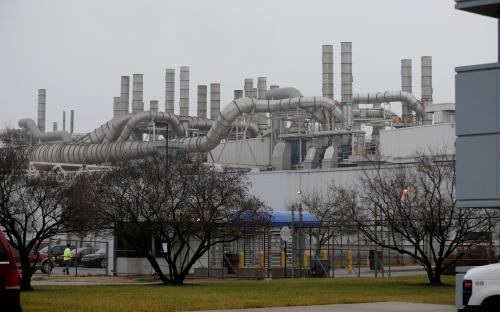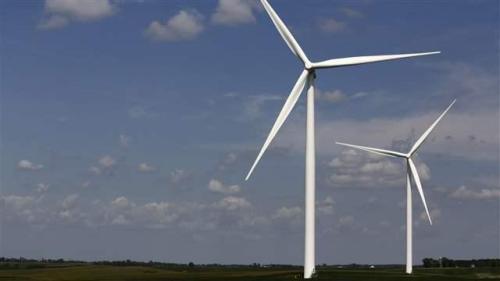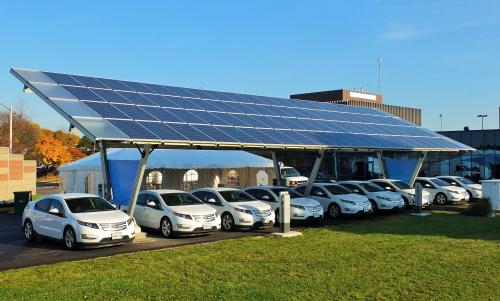Now that congressional action on a major federal infrastructure bill is going nowhere fast, the U.S. Department of Energy’s (DOE) loan program, with $40 billion in existing spending authority, is a here-and-now opportunity to address key U.S. infrastructure needs.
I have been making the case, including at a February 2017 House Science Committee hearing, that the tens of billions of dollars available to the DOE Loan Programs Office (LPO) could be a significant down payment on the $1 trillion investment in infrastructure called for by President Trump. The program has already made infrastructure investments in electricity transmission, carbon capture and sequestration, utility-scale electricity storage, nuclear projects, and advanced vehicle manufacturing.
Now, with the infrastructure bill adrift and the recent “omnibus” spending bill having rejected the Trump administration’s efforts to eliminate the loan program, policymakers have a great opportunity to continue this valuable program and reposition it as an important tool for making progress on innovative energy and transportation-related infrastructure projects that face challenges raising capital.
An ad hoc coalition of companies and NGOs has pressed the case for LPO investment in energy and transportation infrastructure over the last year. As 17 companies declared in an October 2017 letter to appropriators: “The LPO is a win-win-win for taxpayers, American energy innovation, and the communities and states where these investments are being made.” The companies range from a New Jersey-based zinc battery producer to a West Virginia group proposing a three-state natural gas hub to an Ohio company that would produce low-carbon steel for the auto industry to a Virginia-based waste-to-energy firm.
In January, I testified on DOE’s mission at a hearing of the House Energy and Commerce Committee. In closing, Rep. Costello (R-Pa.) asked our panel what we would do if we had $50 billion in federal funding for energy infrastructure. I argued that we actually didn’t need $50 billion because there was $40 billion in LPO ready to be deployed for infrastructure. This opportunity caught the attention of Rep. Rush (D-Ill.), the ranking Democrat on the energy subcommittee. A bipartisan letter followed from Rush and Rep. Barton (R-Texas), the vice chair of the full committee, urging the appropriators to maintain LPO funding. The letter stressed that “projects supported by the LPO are geographically diverse and impact every region of the country… [and have] created over $50 billion in total project investment and saved or created 56,000 American jobs and greatly assisted local economies.”
This letter, an additional one from committee Democrats, and a bipartisan note from a group of Senate appropriators, signaled that key members of Congress, including some who had originally authorized the loan program in 2005, didn’t want it eliminated. In late March, Congress adopted and President Trump signed the omnibus spending bill which explicitly directs DOE to process LPO applications, provides funds to administer the program and, importantly, does not rescind any previously appropriated funds.
Bottom line: The loan program is alive and available to begin funding nationally significant energy projects at a time of need and delay on a formal infrastructure bill. But after a near-death experience in 2017, this is only a temporary reprieve if DOE does not get LPO quickly back in gear, OMB stalls decisionmaking on individual loans, or Congress has a change of heart. The ad hoc group of companies is now pressing DOE to accelerate consideration of pending loans and is actively soliciting applications for new ones.
Bottom line: The loan program is alive and available to begin funding nationally significant energy projects at a time of need and delay on a formal infrastructure bill.
Meanwhile, future prospects for the program would be enhanced, if it was positioned to complement the administration’s proposed Transformative Projects Program to provide grants supporting innovative infrastructure projects or expanded into a more flexible program that better aligns with commercial practices. In a similar vein, a recent report from former DOE Secretary Moniz and other senior members of his DOE team suggests multiple reforms: 1) clarify LPO application criteria for energy infrastructure projects; 2) increase the leverage of DOE lending through broad-based public private partnerships; and 3) improve the LPO application process to cut the current backlog, cap administrative fees, and make the process moreapplicant-driven. One way to better service applicants would be for DOE to make stronger and faster “conditional commitments,” thereby enhancing the viability of projects but protecting taxpayers at the same time.
Congress and the Trump administration should make the most of a good opportunity. With LPO back in business, and appropriate reforms in the works, this successful program can do even more to advance the deployment of innovative energy infrastructure in states across the country.
Dan Reicher is a Non-Resident Senior Fellow at the Metropolitan Policy Program at Brookings and the Executive Director of the Steyer-Taylor Center for Energy Policy and Finance at Stanford University.






Commentary
The Department of Energy’s Loan Guarantee Program presents a crucial opportunity to fund U.S. infrastructure
May 17, 2018